3 Steps: Organizing Your Board Games
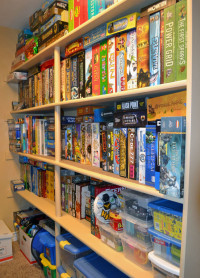
While it may seem a little early to talk about Spring Cleaning, reorganizing our game closet has that same type of feeling.
Instead of “spring cleaning” then, I’ll simply classify our game closet reorganizing as a fresh start to the new year.
As I wrote about recently, we own a lot of board games and card games that we didn’t play at all last year. According to my records on BoardGameGeek.com, we currently have 375 games in our collection. (You can see which games we own via this link.)
So it’s natural during my review of games I played last year to analyze which games may not make it to our table in the future. And if they aren’t going to make it to our table soon, should we really keep them around? Or would they be better off with another family?
Thus, the game closet reorganization project commenced following a simple 3 Step process.
Step 1: The Purge
As you can tell, I love board games. I love having a huge variety of games to fit a wide range of occasions.
No matter the situation (number of players, amount of time, player ages, game style, theme, mood, etc), I love being able to have the right game for the right setting.
I also enjoy being the neighborhood game library. If friends want to borrow some games, I can lend them a few that should be great for their situation as well.
So deciding to part with a game permanently is a hard decision. Sure it’s not as hard as cutting off a limb, but it feels like a tough chapter of life to close.
However, I must forge ahead.
Rather than endlessly growing our game library, I’m instead subscribing to the Replacement philosophy: For every new game we welcome in, at least one must leave.
With 11 new board games for Christmas, that means at least 11 must go.
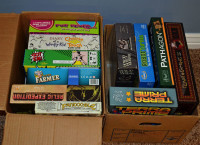
In choosing which board games must go, I go through the following thought pattern.
First, I scan our game shelves and find games that are potential candidates. They’re typically the ones in the back or on the lower shelves.
Next, I pick up the game and stare it down. I remember when we got it and why. I recall times we’ve played it and when we reviewed it. This typically bring up very fond memories and can make it tough to part with.
But then I ask myself the direct question, “Will I / we really play this game again?”
And this is the tough part because it may be a game we really had a fun time playing. However, inherent in that question is also the situational aspect, “Will that situation (such as age of the kids) come again?” Another related question I ponder is, “Given a similar situation, would I choose that same game to play, or is there another game that would fit better?”
If the answer is that in a similar situation, I’d pick a different game, then that game gets added to the “Departure Box”. And the results of the purge this time around yielded 2 departure boxes.
How those games depart is a topic for another day (sell, trade, or donation).
Step 2: The Future
The Departure Box isn’t the only box in the game closet with me.
Another box I keep handy is the “Future Box”. Or another way I thought of it this time around is the “Grandkids Box”.
Most of the games on our lower game shelf are the kids games – the games we mostly played when our kids were younger. With 3 teenagers in the family and our youngest very close, most of those kids games have just been collecting dust.
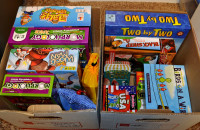
This makes our lower game shelf the first shelf I turn to during Step 1: The Purge. It’s the easiest shelf to pull games from that we’ve outgrown and feel great about sending to other families.
But there are also some great games on those shelves that I’d love to play with future grandkids. However, until that day arrives, they’re just taking up space.
Those are the games that make it into the Future Box and get put into storage. Similar to the departure boxes, this year I also filled 2 Future Boxes.
Of course, those games will still be part of our board game collection since we’re not getting rid of them, so they can’t count towards the 11 that must go. But it’s refreshing nonetheless, to remove them from the shelves.
Step 3: The Order
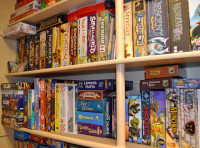
Once the departing and future games are boxed and set aside, it’s time to start the organizing.
The first thing to do is make sure our favorite board games are easily accessible. Since my favorites list is very long, not all games can get a spot up front. But they can get spots on our two main game shelves (those that are eye or hand level).
After that, most of the organizing goes by box size – putting similar box sizes together. That way we can make the most of our shelf space. (And it doesn’t hurt that I love the visual appeal of uniformity.)
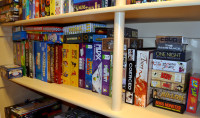
As you can see in the photos, the way we store most of our board games is upright.
I like to place games upright on the shelf because taking one game off the shelf doesn’t require readjusting other games each time. It’s so nice and simple to slide in and out.
Some games however, based on the components and inserts inside or the box size may not sit well on their side. So they get stacked. Also, many smaller boxes are best suited to be stacked for efficient use of space.
Secondarily, games from the same publisher can often fit nicely together, especially if they’re consistent box sizes (like Days of Wonder or Fantasy Flight Games).
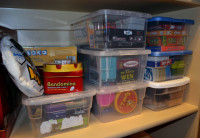
And then there’s always the option of grouping games by theme (like a space theme of Alien Frontiers, Gravwell, and Star Wars: Empire vs. Rebellion). But box size uniformity will typically take precedence over theme for me.
And now that we’ve moved out a bunch of the younger kids games, the bottom shelf houses most of our card games. With such a wide variety of small card game box sizes, we’ve found putting them in clear bins keeps them organized best.
The party games used to be on the very top shelf, but now I’ve moved most of them to the other side of the closet (yes, there are game-dedicated shelves on both sides). They’re still just inside the door, but now they’re at eye-level and easier to see and grab.
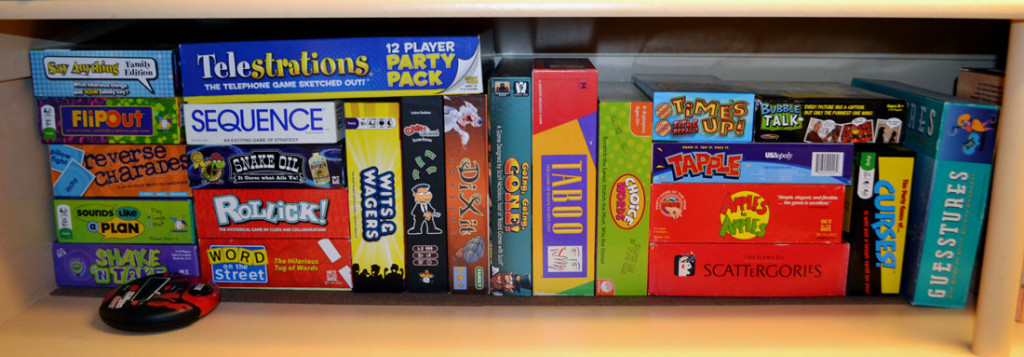
The last couple board game groupings are those we have yet to play and those that are in line to be reviewed.
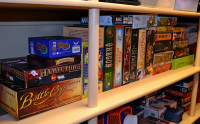
At eye-level, next to the party game group, I’ve placed our “to review” games. These are games we have yet to review, but plan to. Dates aren’t set, but we always have games on the waiting list.
At an average rate of 1 game review a week, it will take a bit of time to get through our list – especially when we keep adding more along the way. 🙂
(Many of our reviews coming over the next few months aren’t in this photo simply because they’ve already taken spots on other shelves. Such as Ca$h & Guns, Splendor, Seasons, Bugs in the Kitchen, Battle of Five Armies, Coerceo, Star Wars: Empire vs. Rebellion, Red7, K2, Qin, Rattus, and several more.)
The shelf below that one (not shown), contains another bunch of games that we’ve received but have yet to play. So many options.
A note about our game closet:
In our case, we’re lucky enough to have what has turned into a walk-in board game closet. It didn’t start out that way.
When we finished our basement, we built the area as a storage closet. However, it just so happened that this was also the time our board game collection started growing rapidly.
What started out as just taking up one shelf mushroomed to many shelves. The closet still includes boxes of winter clothes, halloween costumes, and such, but it’s now mostly filled with board games and card games.
Enjoy your games
We know most families don’t have as many games or as much space for games. Regardless of what space you have, hopefully these tips are helpful in determining your own processes for evaluating and organizing your family board games.
More important than game organizing is game play.
However you filter and organize your games, our hope is that you’re spending plenty of time pulling them out and getting them to the table to play with your family.
That’s what it’s all about.
Enjoy!

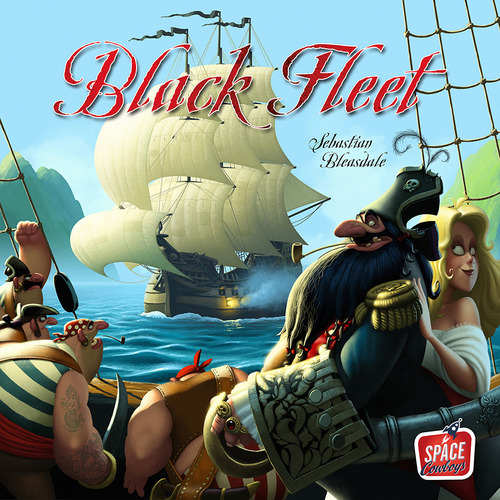
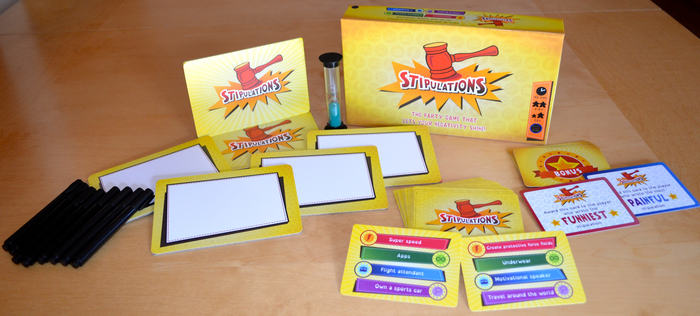
Great article, thanks for the suggestions. I was wondering, do you do anything special with your game expansions?
Aaron – I typically try to consolidate game expansions inside the original game box. As examples; all of the Dominion expansions we have are stored in one box and all Thunderstone cards are in one box (we picked the Wrath of the Elements box because we like that box art best.) We wrote about combining the Kingdom Builder expansion into the original box. We also posted a video of how we consolidated a Descent expansion into the original game box.
However, some games are super hard to fit into one of the boxes. We have most Power Grid maps and they all fit in the box. But we couldn’t fit the Power Grid: Robots in with them. So those pieces are in a separate baggie on top of the game box. And we still want to create our own foam insert system (like Descent) to put the King of Tokyo Power Up expansion in with the original.
Excellent tips here. As somebody who is somewhat new (Oct 2013 or so) to the board game world, I don’t have a ton. But the one person who hosts our weekly game night has a ton and I know how he is with his games, so I know it can’t be easy to get rid of games!
P.J. – You’re right that it’s not easy to get rid of games. But once reality sets in of how many games you can realistically play over a period of time, it gets a bit easier.
What kind of shelving do you use for your games?
P. Taylor – Our game shelves are built-in closet shelves.
Hi,
I have a question but I don’t know if you still answer them (your post is from 2015) 😉
But I would like to stack my boardgames upright but do you have a suggestion how I can prevent al the small stuff of falling out or getting mixed up within the box?
Would like to hear from you.
Kind Regards
Rixt Baas
Rixt – We use baggies to place most things in. This includes the cardboard bits, tokens, playing pieces, and even cards. That way there aren’t any loose pieces falling around. That way, when things shift (as they will), they don’t get mixed up or fall out.